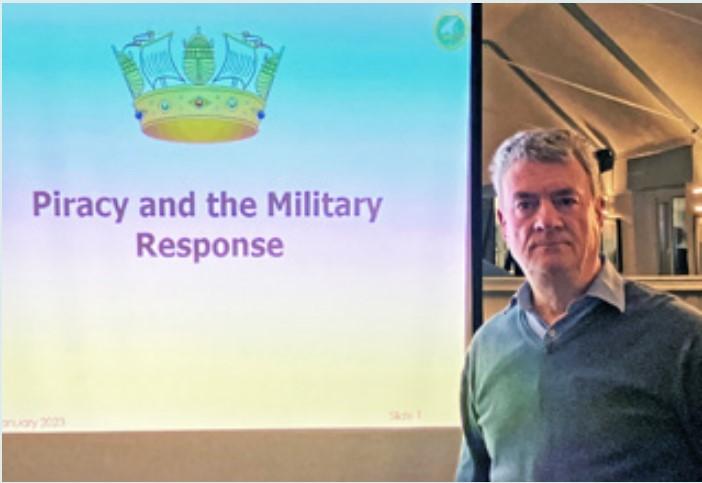Piracy on the high Seas
Alan Eastham (pictured) enthralled Bexhill Rotarians and their guests at their meeting with tales of modern piracy and how the various
authorities deal with it.

Alan didn’t even touch on pirates of long ago in the Caribbean but instead outlined the three main areas of piracy in the world of today:
- Robbery of vessels and their occupants occurring in the South China Seas
- Oil theft which occurs in West Africa
- Kidnap and Ransom occurring around Somalia
He concentrated his talk on the Somalia situation which reached a peak around twelve years ago but has since become less of a problem. Alan went on to explain that in Somalia the people have a tight knit clan structure based on families and villages.
As a result of the government around the millennium selling the fishing rights to the highest bidder, and because the local fishermen were then deprived of their income, they responded by hijacking foreign fishing boats and later any vessel which was poorly defended or those vessels travelling at less than fifteen knots.
Because of this well organised piracy, ships were advised to travel at night, photograph any suspicious boats, keep well away from land, keep a good watch, have razor wire on the outer rails and mesh over the bridge windows to stop grenades.
Due to this threat from pirates, navies of many countries sent warships to aid safe passage in the area as well as actually catching the pirates.
Fortunately, when pirates were prevented from leaving port, and when shipping companies managed ship defence better with invariably armed guards on ships, the piracy ultimately died down.
